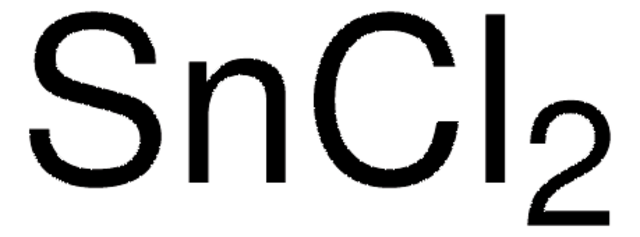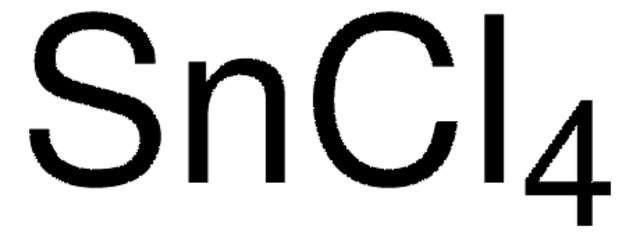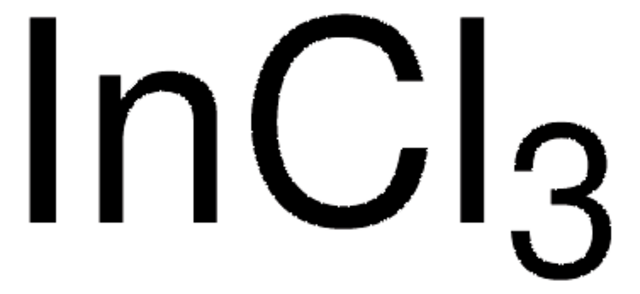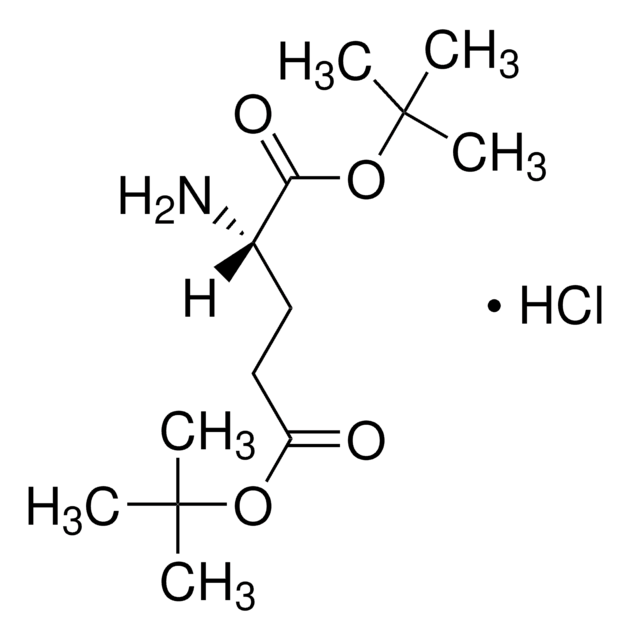431508
Tin(II) chloride dihydrate
≥99.99% trace metals basis
Sinonimo/i:
Stannous chloride dihydrate
About This Item
Prodotti consigliati
Grado
ACS reagent
Livello qualitativo
Saggio
≥99.99% trace metals basis
Impiego in reazioni chimiche
core: tin
reagent type: catalyst
P. ebollizione
652 °C (lit.)
652 °C
Punto di fusione
37-38 °C (dec.) (lit.)
Cationi in tracce
Ca: ≤0.005%
Fe: ≤0.003%
K: ≤0.005%
Na: ≤0.01%
Pb: ≤0.01%
Stringa SMILE
O.O.Cl[SnH2]Cl
InChI
1S/2ClH.2H2O.Sn/h2*1H;2*1H2;/q;;;;+2/p-2
FWPIDFUJEMBDLS-UHFFFAOYSA-L
Cerchi prodotti simili? Visita Guida al confronto tra prodotti
Categorie correlate
Applicazioni
Caratteristiche e vantaggi
Avvertenze
Danger
Indicazioni di pericolo
Classi di pericolo
Acute Tox. 4 Inhalation - Acute Tox. 4 Oral - Aquatic Chronic 3 - Eye Dam. 1 - Met. Corr. 1 - Skin Corr. 1B - Skin Sens. 1 - STOT RE 2 Oral - STOT SE 3
Organi bersaglio
Cardio-vascular system, Respiratory system
Codice della classe di stoccaggio
8B - Non-combustible corrosive hazardous materials
Classe di pericolosità dell'acqua (WGK)
WGK 3
Punto d’infiammabilità (°F)
Not applicable
Punto d’infiammabilità (°C)
Not applicable
Dispositivi di protezione individuale
Eyeshields, Faceshields, Gloves, type P3 (EN 143) respirator cartridges
Scegli una delle versioni più recenti:
Possiedi già questo prodotto?
I documenti relativi ai prodotti acquistati recentemente sono disponibili nell’Archivio dei documenti.
I clienti hanno visto anche
Global Trade Item Number
| SKU | GTIN |
|---|---|
| 431508-50G | 4061832108322 |
| 431508-250G | 4061832108315 |
Il team dei nostri ricercatori vanta grande esperienza in tutte le aree della ricerca quali Life Science, scienza dei materiali, sintesi chimica, cromatografia, discipline analitiche, ecc..
Contatta l'Assistenza Tecnica.










